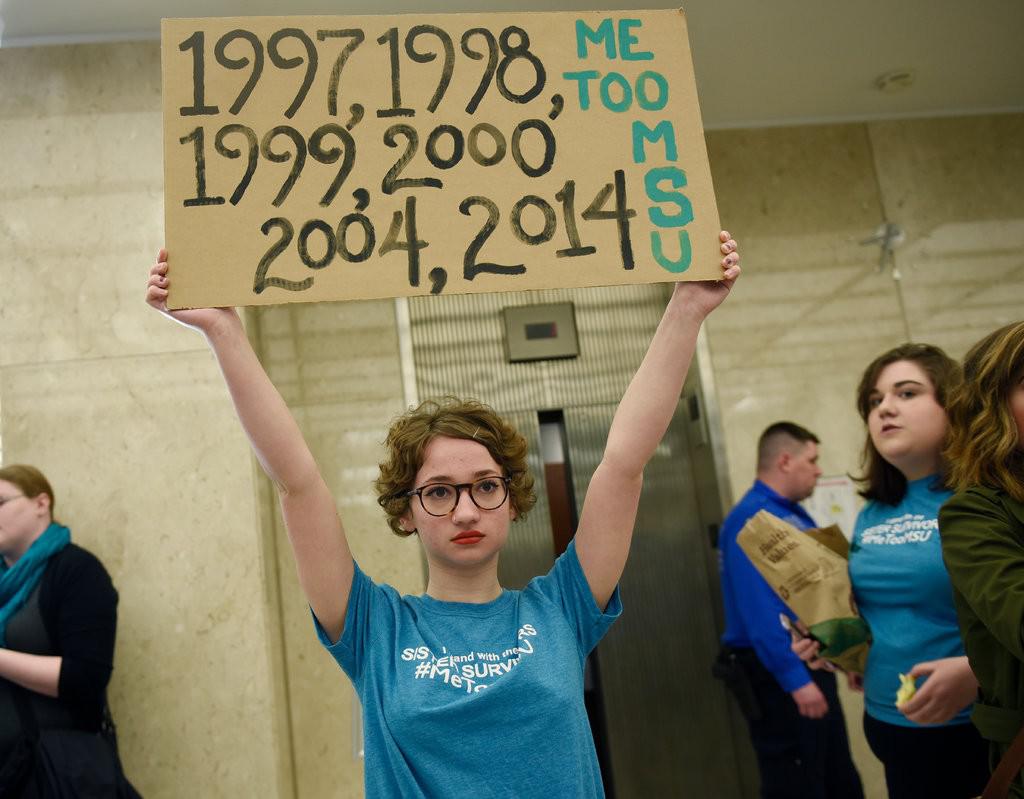|
Michigan State Will Pay $500 Million to Abuse Victims. What Comes Next?
By Nancy Hogshead-Makar
On Wednesday, Michigan State University announced it had settled with 332 victims of sexual abuse by Lawrence G. Nassar, a physician who worked with the school’s gymnastics program. The settlement will pay $425 million to 332 victims, or about $1.28 million each; it will set aside an additional $75 million in a trust for any future claims of sexual abuse against Mr. Nassar. Half a billion dollars is a landmark settlement, one that couldn’t have been achieved without the courage and vulnerability of Mr. Nassar’s hundreds of victims. And it didn’t help that the university chose a strategy of maligning the victims, accusing one of them, Rachael Denhollander, of being in it “for the money.” Until recently, though, this sort of strategy often worked. The difference this time is both the sheer number of victims and the intersection of the Nasser case and the #MeToo movement. Understanding the Michigan State settlement within that context is critical, because it points to where things need to go next: The #MeToo/#TimesUp movement is not limited to getting victims much-needed compensation and ousting powerful and abusive men from their professional careers; it means changing the systems and cultures that breed sexual harassment and abuse in the first place. I know the culture of collegiate and Olympic sports particularly well. I am an eight-year veteran of the United States national swimming team, a two-time Olympian and a three-time gold medalist. My 1984 Olympic coach, Mitch Ivey, was barred from the sport for sexually abusing my teammate. He never hid his sexual contacts with multiple underage swimmers; he was open about their “relationship” — common parlance in the swimming community that normalized child molestation. Despite his well-known abuse, it took 30 years before USA Swimming barred him. However badly we think Michigan State behaved, at least the university recognized that it has a duty to protect its students from sexual abuse and violence, and it eventually acted. Structures were in place, even if it took the school too long to use them. Not true for the United States Olympic Committee. It has known that sexual abuse is a significant risk of harm to America’s athletes, but the committee made the conscious decision to let the abuse happen without helping victims. Like Mitch Ivey, hundreds of other coaches were known risks to children. Instead, the committee has adopted a “not my problem” approach, declaring that it is up to the individual sports to root out abuse. By taking that strategy, the committee avoids having to educate families and athletes about the risks of sexual abuse, having to train children on how to recognize appropriate boundaries and having to train its staff on how to conduct an investigation or a hearing that the parties would consider fair. Moreover, no matter how poorly it has protected athletes, the committee needn’t fear civil liability unless it employs the coach directly — a tiny number. The committee’s strategy has saved them enormous sums. This is beginning to change. In February, in response to powerful testimony in the Nassar case by athletes like Aly Raisman, Congress passed the SafeSport Act, which imposes an obligation on the Olympic Committee and the 47 sports it oversees to protect athletes from physical, emotional and sexual abuse. It prohibits coaches and those in power over athletes from being alone together, except in an emergency. It requires everyone inside the Olympic movement to report instances of abuse. And it authorized the creation of the Center for SafeSport, an independent entity that will provide expertise to sexual abuse complaints. The settlement, and the SafeSport Act, are important, but change cannot stop there. Sexual abuse is just one symptom of the athlete’s lack of power within the Olympic movement. Instead of thinking about how to protect athletes, we need to ask how to give them power. Too often, coaches and other authority figures hold all the cards; athletes who speak up risk getting cut from the team. To change this, the United States Olympic Committee has to change its approach to sports. Too often its staff usurps the prestige of the Olympic movement for itself, while treating the athletes as fungible commodities. The committee needs to invert those priorities; it must aspire to become the best-run nonprofit in America, in service to the country and our athletes. It’s not a stretch to compare the Olympics to the military. When our troops win wars, military generals do not become rich. Yet the Olympic Committee corporate staff receives hefty bonuses when our athletes perform well. The military goes to great lengths to help service members reintegrate into civilian society, including medical and psychiatric support; Michael Phelps, among others, has called for similar services for our athletes. Our youth sports infrastructure has been decimated by the committee’s greed; according to the Aspen Institute Sport and Society Program, youth sports are becoming a game for wealthy families, as less money supports grass roots sports participation. The committee’s greed actually undermines its basic mission; other countries, like Norway, support sports participation for all and perform much better at the Games. Next week, both the House and Senate are holding hearings on sexual abuse in the Olympic movement, providing us promise and hope that the SafeSport Act and the Michigan State settlement are only the beginning of real and permanent change for our country’s athletes, upon whose shoulders rest the ideals and principles of the Olympic movement itself.
|
.
Any original material on these pages is copyright © BishopAccountability.org 2004. Reproduce freely with attribution.
